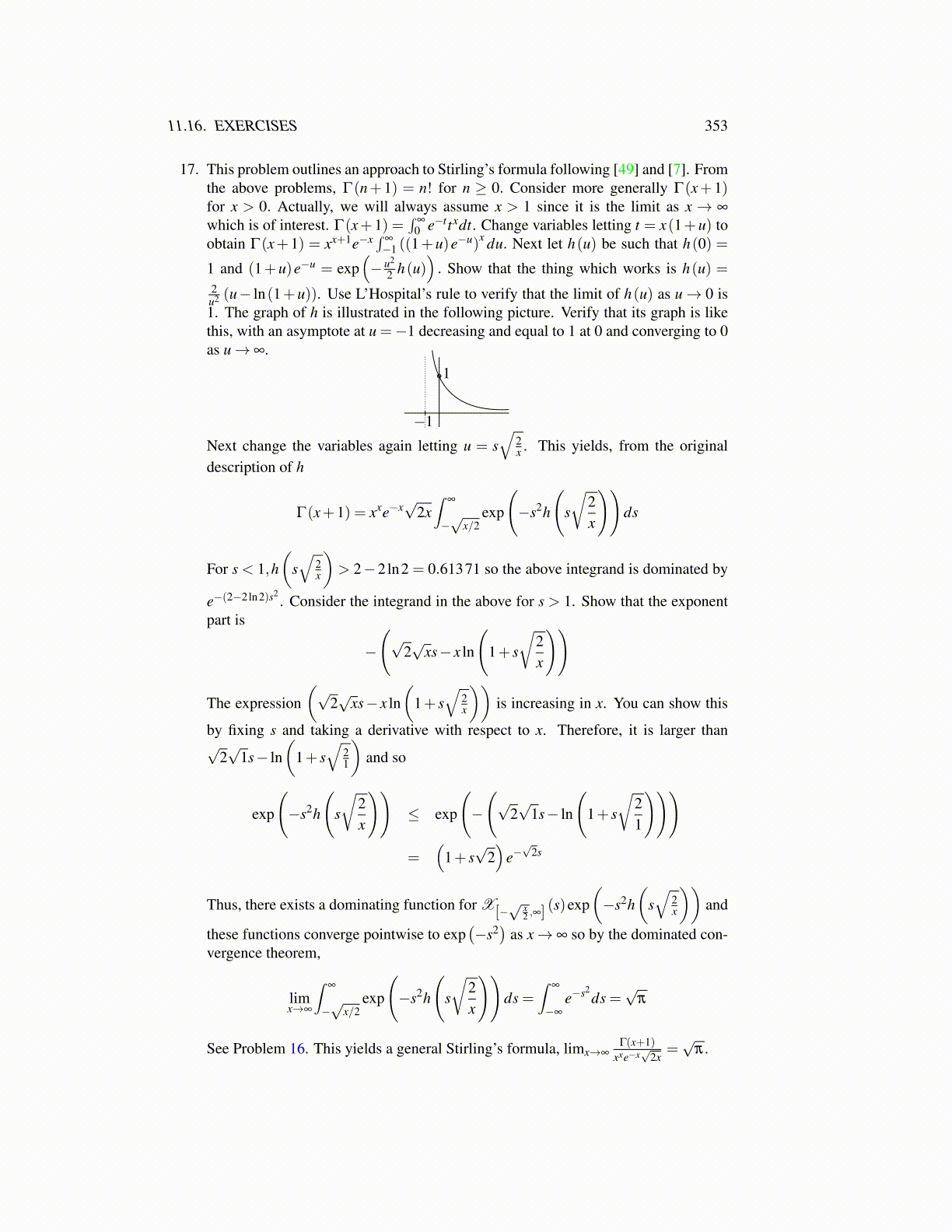
11.16. EXERCISES 353
17. This problem outlines an approach to Stirling’s formula following [49] and [7]. Fromthe above problems, Γ(n+1) = n! for n ≥ 0. Consider more generally Γ(x+1)for x > 0. Actually, we will always assume x > 1 since it is the limit as x → ∞
which is of interest. Γ(x+1) =∫
∞
0 e−ttxdt. Change variables letting t = x(1+u) toobtain Γ(x+1) = xx+1e−x ∫ ∞
−1 ((1+u)e−u)x du. Next let h(u) be such that h(0) =
1 and (1+u)e−u = exp(− u2
2 h(u)). Show that the thing which works is h(u) =
2u2 (u− ln(1+u)). Use L’Hospital’s rule to verify that the limit of h(u) as u→ 0 is1. The graph of h is illustrated in the following picture. Verify that its graph is likethis, with an asymptote at u =−1 decreasing and equal to 1 at 0 and converging to 0as u→ ∞.
−1
1
Next change the variables again letting u = s√
2x . This yields, from the original
description of h
Γ(x+1) = xxe−x√
2x∫
∞
−√
x/2exp
(−s2h
(s
√2x
))ds
For s < 1,h(
s√
2x
)> 2−2ln2 = 0.61371 so the above integrand is dominated by
e−(2−2ln2)s2. Consider the integrand in the above for s > 1. Show that the exponent
part is
−
(√
2√
xs− x ln
(1+ s
√2x
))
The expression(√
2√
xs− x ln(
1+ s√
2x
))is increasing in x. You can show this
by fixing s and taking a derivative with respect to x. Therefore, it is larger than√
2√
1s− ln(
1+ s√
21
)and so
exp
(−s2h
(s
√2x
))≤ exp
(−
(√
2√
1s− ln
(1+ s
√21
)))=
(1+ s√
2)
e−√
2s
Thus, there exists a dominating function for X[−√ x
2 ,∞](s)exp
(−s2h
(s√
2x
))and
these functions converge pointwise to exp(−s2
)as x→ ∞ so by the dominated con-
vergence theorem,
limx→∞
∫∞
−√
x/2exp
(−s2h
(s
√2x
))ds =
∫∞
−∞
e−s2ds =
√π
See Problem 16. This yields a general Stirling’s formula, limx→∞Γ(x+1)
xxe−x√
2x=√
π .